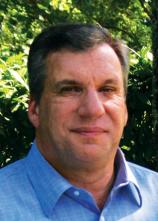Open: Inside the Ropes at Bethpage Black
Review
Open: Inside the Ropes at Bethpage Black
First things first: OPEN: Inside the Ropes at Bethpage Black is not the saga of the 2002 U.S. Open Golf Tournament. The United States Golf Association is very picky about their event. They want everyone to understand that the U.S. Open is known as a championship and not a tournament. In the broadcast trailer at NBC, the television outlet for the Open, signs remind the commentators that, "This is a championship, not a tournament." The United States Golf Association (USGA), the governing body of American golf, is very precise in their language. One refers to "flagsticks" rather than "pins" and "bunkers" instead of "sand traps." As John Feinstein, the author of this outstanding book, was quick to learn, the folks at the USGA are very particular and precise about many details, from significant to inconsequential, as they stage the foremost golf championship of the United States.
That the Open could even be staged at Bethpage Black was an accomplishment of great magnitude. U.S. Open golf courses are generally the most challenging and exclusive courses in America. While it is true that Pebble Beach, a host to several championships, is a public course, its greens fee of nearly $400 makes it unavailable to most golfers. David Fay, executive director of the USGA since 1989, always dreamed of an Open that could be held on a truly public golf course. His hope for the Open was that many spectators could watch the tournament and actually share the difficult shot-making experience of the course. As professional golfer Scott McCarron drove into Bethpage on the first day of practice, he was approached by one of the security guards. Lacking the proper identification, McCarron was worried that the strict security in effect would prohibit his parking in the player's area. But the security guard was only interested in discussing the strategy for playing the third hole. "I realized," McCarron said, "that this had to be the first U.S. Open in history where the cops guarding the golf course had actually played it more often --- a lot more often probably --- than the players in the event had played it."
Having grown up in the New York area, Fay was familiar with Bethpage State Park located on Long Island, New York. The Black course at Bethpage is legendary. On the first tee is a sign that reads, "The Black Course Is an Extremely Difficult Course Which We Recommend Only for Highly Skilled Golfers." In 1994, while traveling in the vicinity of Bethpage, Fay stopped at the course to simply walk around and see if the Black was worthy of a United States Open. After walking the course he concluded that the answer was yes.
Deciding to award the Open to Bethpage was akin to a 350-pound man announcing that he intends to weigh 200 pounds by New Years Day. Words alone cannot accomplish the goal. There was a great deal to be done before the first group would tee off on the first day of the Open championship. The state of New York, the owner and operator of Bethpage, would have to agree to a contract that would allow the Open to be played on its course. In addition, the course itself would have to undergo substantial redesign and refurbishing to make it a genuine test worthy of the U.S. Open. The agreement between the USGA and the state of New York called for a payment of $3 million dollars to rebuild the Black course. For its part, New York would agree that, once the work was completed, the course would be maintained in pristine condition for the future. On August 28, 1996, it became official: the 2002 U.S. Open would be played at Bethpage Black.
For the first time in its history, the Open would be played at a true municipal golf course. It is amazing to ponder the details that must be attended and the effort that must be expended to prepare for one week of golf and four days of championship play. As Feinstein recounts the saga of preparation, it is almost as if the USGA was planning to go to war. Where would golfers stay? Where would spectators park? Where would volunteers eat? A never-ending list of questions and answers required attention. The USGA prepared for all of the contingencies, but as often transpires in meticulously planned campaigns, the unexpected event occurred. On September 11, 2001, the Twin Towers in New York City came crashing down. In a few short months, an entirely new security plan had to be implemented to make certain that players and spectators alike would be protected.
OPEN: INSIDE THE ROPES AT BETHPAGE BLACK is a joy to read for anyone who has ever attended a golf event or even watched one on television. After reading what goes on outside the ropes, the actual play inside the ropes takes on an entirely new meaning. By the way, a golfer named Tiger Woods was the winner of the 2002 Open championship. Feinstein does manage to spend about a quarter of the book recounting the four days of the championship. Woods's winning score of 277 was three under par for the four rounds. Of the 156 players who started the tournament, he was the only golfer to finish under par. At the awards ceremony he acknowledged the quality of the Black. "Your golf course kicked my butt," he told Bethpage officials. A similar compliment is due John Feinstein and his book.
Reviewed by Stuart Shiffman on January 22, 2011
Open: Inside the Ropes at Bethpage Black
- Publication Date: April 12, 2004
- Genres: Nonfiction, Sports
- Paperback: 384 pages
- Publisher: Back Bay Books
- ISBN-10: 0316778524
- ISBN-13: 9780316778527





